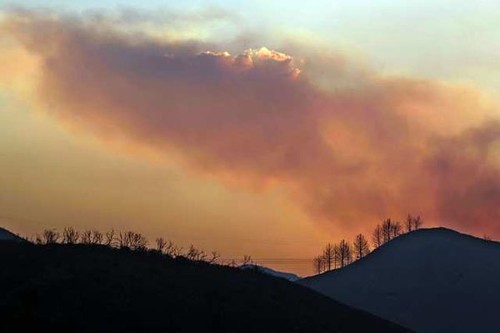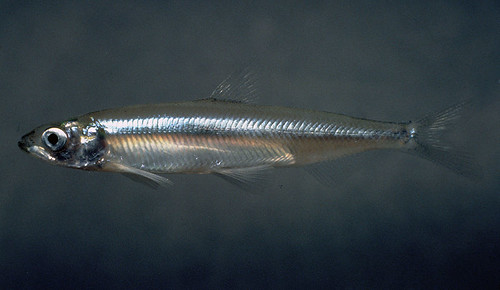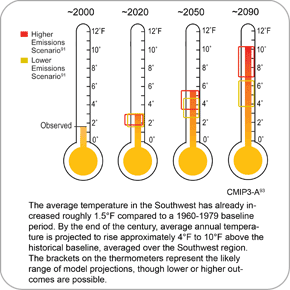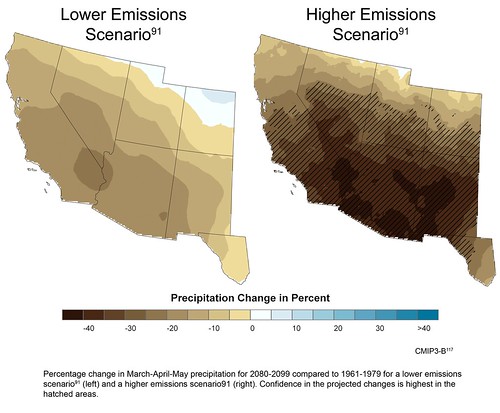(x-posted from DailyKos)
The skies are finally clearing above Los Angeles. For days, they’ve been that peculiar yellowish color. The Station fire, largest in county history, is 42% contained. So far, the official cause is arson.
Meanwhile, the city of Los Angeles has imposed water rationing, and hundreds of miles to the north, the California state legislature prepares to tackle the water issue. Governor Schwarzenegger claims that the cause of the drought is the Delta smelt, a two inch long fish.
Everything has a cause, but some causes are more important than others.
My day job includes arguing about “efficient proximate causation,” or predominant causation, of potentially covered insurance losses. For a true example, if a building’s foundation settles, an insurance carrier will deny a property damage claim, because earth movement is not covered…unless the foundation settles because of a sudden and accidental pipe burst under the building, because a sudden and accidental pipe burst is covered…unless the pipe burst because it was made from low quality Korean steel, because an original construction defect is not covered…unless your eyes have glazed over reading this, in which case you’re like most judges. We bicker about causation in flavors of immediate, concurrent, superseding, and intervening. Ultimately, a judge sifts through the facts and arguments and decides that one of the various proffered causes is the predominant one, one lawyer wins the case and one lawyer loses, and an insurance carrier pays or doesn’t pay accordingly.
 (Photo: LA Times)
(Photo: LA Times)
Investigators have found the starting point of the huge Station fire that devastated mountains near Los Angeles, and the cause might be arson — although they’re not ruling out an accidental spark from a negligent person. A fire in Los Angeles in August seems unnatural to this native Angeleno, because hot dry Santa Ana winds of October are usually required to bring out arsonists and fan sparks, but I don’t doubt the investigators’ work.
The Station fire ranks 12th (so far) on a list of California’s largest wildfires. As this chart of California’s 20 largest fires shows, 9 fires occurred from 1932 to 2000, while 11 have occurred since 2000. Six of those fires were lightning-caused, three (including the Station fire) are listed as unknown/under investigation, and the remainder are attributed to humans and their creations. Yet are humans and lightning the predominant cause of all these horrific fires?
Meanwhile, the Delta smelt is giving California legislators conniption fits.

There’s widespread agreement that the Sacramento-San Joaquin Delta is collapsing. This tiny fish was once common in the brackish waters of the Delta, but is now endangered. In 2007, a federal judge ordered water managers to cut back drastically on pumping water from Northern to Southern California, causing water rationing across California. Yesterday, the Governator complained to the federal Departments of Interior and Commerce that the fish have caused the catastrophic impact of the drought. The federal officials responded: “a three-year drought is responsible for most of the state’s water shortages, not agency scientists.” Pwned! No, Arnold, the fish is not the predominant cause of Southern California’s water shortage.
On a thermometer, climate change in the Southwest so far looks like this:

In other words, temperatures already increased an average of 1.5 degree F from the 1960s-70s baseline to 2000, and they’re likely to increase another 2 to 3 degrees by 2020.
What does that 1.5 degree (or more) temperature rise mean for wildfires? Economists studying wildfires (22 pg pdf) in Montana concluded:
We find that a one degree increase in average spring and summer temperature is associated with a 305 percent increase in area burned, and a 107 percent increase in home protection costs. These results suggest that climate change and development in wildfire-prone areas will likely lead to a dramatic increase in wildfire suppression costs in the near future.
Got that? The immediate cause of a particular wildfire may be an arsonist, a lit cigarette butt, or a lightning strike; but the predominant cause of the dramatic increase in wildfires is the climate.
Droughts have come and gone, but California and the Southwest appear to be beginning a megadrought. The general consensus of state and federal reports is this: Rising air temperatures cause the shrinking Sierra snowpack and thus cause more drought. The causal connection between global warming and drought is more intuitively easy to grasp than the causal connection between global warming and wildfires. However, in case there’s any doubt, the future of the Southwest ain’t pretty.

